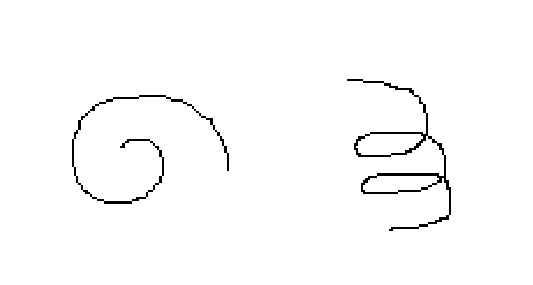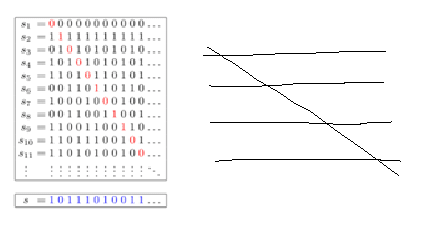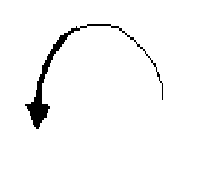In a blog post about local and global errors in mathematics, Terrence Tao notes:
Sometimes, a low-level error cannot be localised to a single step, bur rather to a cluster of steps. For instance, if one has a circular argument, in which a statement is claimed using as justification, and is then claimed using as justification, then it is possible for both impliciations and to be true, while the deduction that and are then both true remains invalid. (Note though that there are important and valid examples of near-circular arguments, such as proofs by induction, but this in not the topic of this current discussion.)
Here are two analogies between proof methods and shapes. Circular arguments and circles. But "near-circular arguments" and induction is a new one to me. It makes sense: you are proving the same claim "off by one", and don't wind up where you started. Visually, we could view this as a spiral, infinitely repeating almost the near circular shape. Perhaps exactly, if it's a vertical spiral. Naturally, the next step is to ask what proof methods correspond to what shapes, and how well.
On which note, let's see which spiral fits induction better. The horizontal, growing spiral suggests a base case and an increase in size. But I prefer the vertical spiral, as it suggests the inductive step via its infinite repetition of the same step. What makes these images works is that they convey a sense of motion, like that of the proof methods going through a space of propositions or concepts. I'm not sure if that's a necessary property of this game we're playing, but it feels sufficient.

OK, now that that's settled, what about other proof methods? IMO the obvious next answer is diagonalization. The classic example of this technique is Cantor's diagonal proof that . The usual visualization suggests a shape: infinitely many parallel horizontal lines stretching off to the right, with a diagonal slicing through them. Unfortunately, my doodle just doesn't match the kinaesthetic sense I get from diagonalization, the sense of iterating through a list of lists, grabbing the nth item, flipping it and appending. And the lines don't map to concepts.

My other doodles also failed to represent this. So let's move on.
Proof by analogy is now, for whatever reason, associated with maps to me. Perhaps it's the effect of reading Woit's amazing book on representation theory and physics. Anyway, a map is just an arrow, but I feel like a flat arrow doesn't quite do it for me. It's gotta be bending, as if it's jumping across the pond between two landmasses. But now it's thick with a knob at the end. Wizardly, yes, but inelegant. Points on the curve no longer feel like they map to concepts (forgetting about the fact the curve is continuous). But whatever, I'll say this is a kinaesthetic success. But if anyone has better ideas, I'm listening.

What other proof methods suggest a shape?